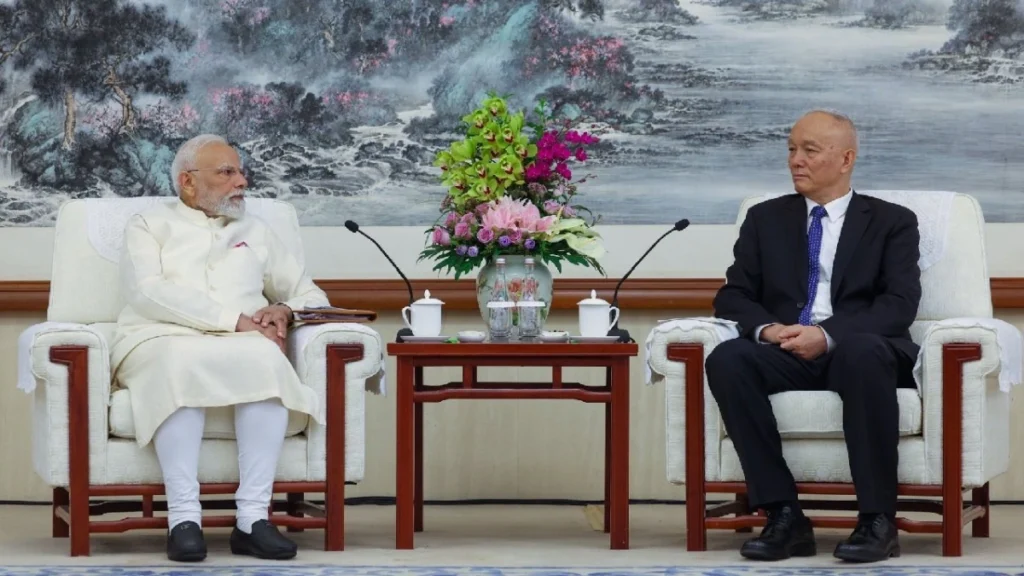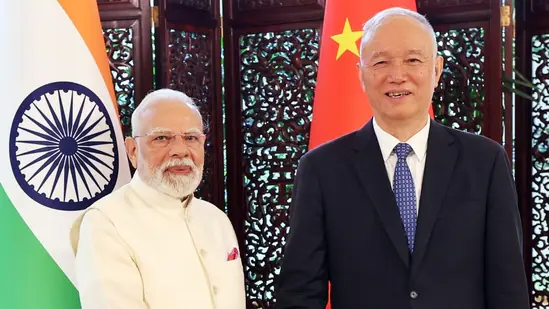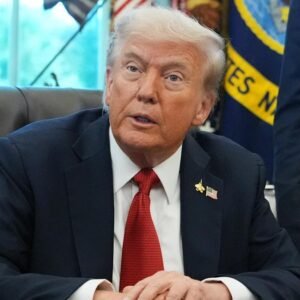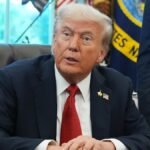Diplomacy is always characterized as the art of subtle signals; occasionally, the smallest of gestures sends the loudest message. The recent tete-a-tete of Prime Minister Narendra Modi with Cai Qi, one of the most powerful men in China’s power structure, is a classic example in that vein. On the face of it, it can look like yet another sideline chat during an international summit. But to those aware of the encoded Chinese power game world, this was anything but routine.

Who is Cai Qi, and why is he important?
To really grasp why this meeting matters, it helps to know who Cai Qi is in China’s political universe. He isn’t just another senior leader sitting in a long list of officials; he’s seen as the man President Xi Jinping trusts the most. In China’s power circles, it’s not always about the title you hold but how close you are to the top leader. And by that measure, Cai stands right at the center of power, making him one of the most influential figures in Beijing today.
Diplomats in Beijing often regard him as “the man who does not smile.” Reserved, feared, and rarely seen interacting with foreign dignitaries, Cai is usually kept behind the scenes. His appearance alongside, or in place of, Xi is meant to send a clear signal: this is serious business. That President Xi personally asked Cai Qi to meet Prime Minister Modi speaks volumes about the importance Beijing is attaching to its ties with New Delhi.
A Rare Gesture
During the Shanghai Cooperation Organisation (SCO) summit in Tianjin, Cai Qi broke his own pattern of avoidance. Not only did he sit down with Prime Minister Modi for more than 45 minutes, but he also reportedly lightened the mood by joking about hosting lunch for him, something highly unusual for a man with his reputation.
For seasoned China watchers, Cai smiling and engaging with PM Modi is no less than a diplomatic earthquake. In China, gestures and body language tend to mean more than public statements. The fact that Cai Qi, usually painted as stern-faced, appeared with warmth is a sign of a deliberate attempt on the part of Beijing to restart its romance with India.
Why This Meeting Matters
India-China relations have been unstable in the recent past, especially following the Galwan clashes in 2020. Confidence reached rock bottom, and military face-offs along the Line of Actual Control (LAC) brought the two Asian titans to the verge of prolonged confrontation.

China is a rival but also an indispensable ally for India in international matters, be they climate change, counter-terrorism, or commerce. For China, India is simply too large to be avoided, particularly when its own relations with the West are strained. By deputing Cai Qi to meet PM Modi, Xi Jinping seems to be signaling that China is ready to open a new chapter.
Moving Beyond Pakistan
One of the longstanding hurdles in India-China relations has been Beijing’s unwavering closeness to Islamabad. India has often felt that its own ties with China were being held hostage to Beijing’s strategic embrace of Pakistan. But New Delhi appears to be making a pragmatic shift. As much as India remains wary of the “iron brotherhood” between China and Pakistan, it is unwilling to let that derail its own engagement with Beijing.
The message from India is clear: normalization with China must move ahead step by step, independent of third-party entanglements. That means stabilizing the border, restoring peace along the LAC, and simultaneously working together on issues of global concern.
Towards a Stable Border
Perhaps the most practical takeaway from the Modi-Cai meeting is the push for high-level military dialogue. Both nations appear committed to resolving friction points along the border through commanders’ meetings at the lieutenant general and major general level. The aim is twofold: to quickly sort out disputes and to begin demarcating non-contentious stretches of the border.
If successful, this would reduce the risk of sudden flare-ups and bring the relationship closer to the relatively stable pre-May 2020 era. For soldiers stationed along the harsh Himalayan frontier, such a breakthrough would be more valuable than any number of joint communiqués.
Conclusion
Prime Minister Modi’s meeting with Cai Qi was more than just another diplomatic engagement. It was a carefully choreographed signal, one aimed at China’s domestic audience as much as at India’s skeptics. By bringing his closest aide to the table, President Xi has shown that Beijing wants to give India a serious hearing.
For India, the meeting was equally significant. It reinforced New Delhi’s willingness to engage, even while remaining vigilant about its core concerns. In the world of diplomacy, smiles, silences, and handshakes matter as much as words. And when “the man who does not smile” chose to do so with Prime Minister Modi, the world took notice.









